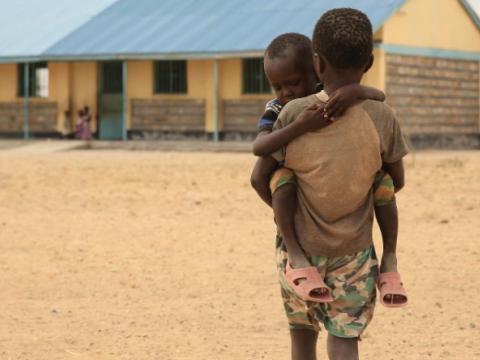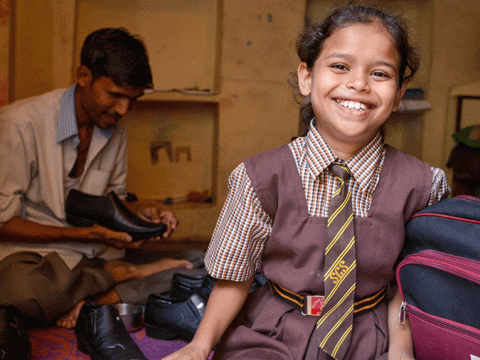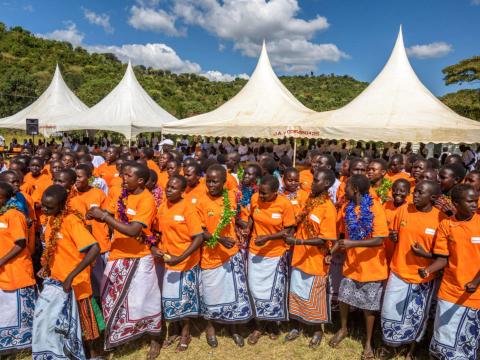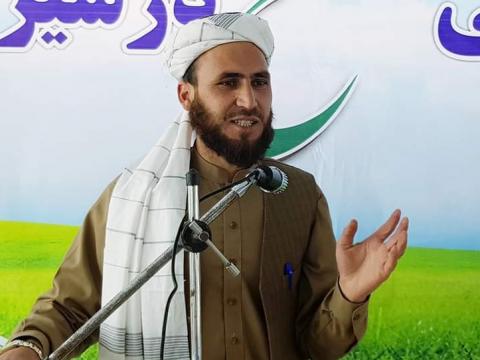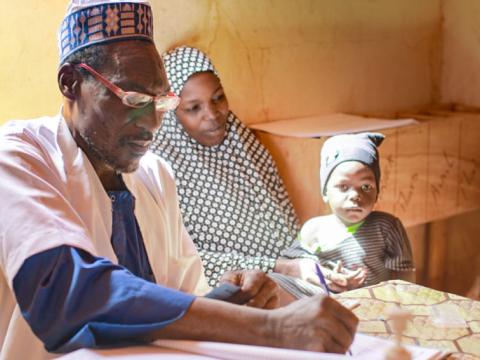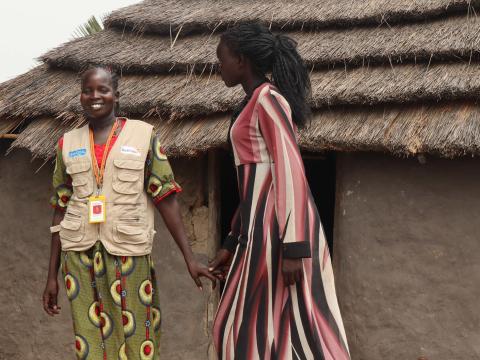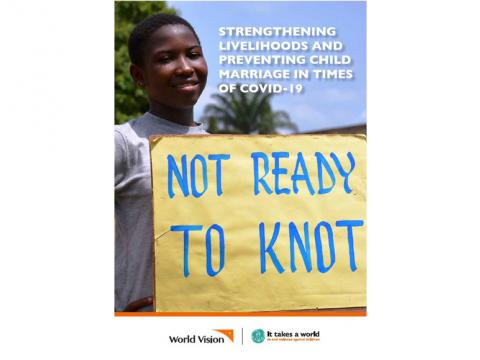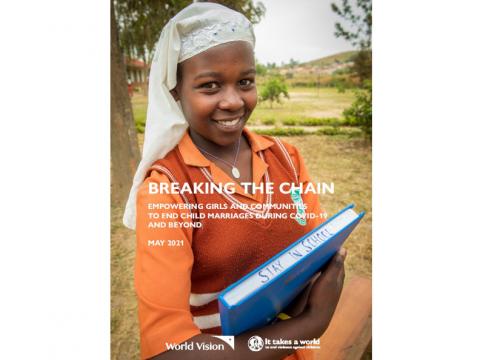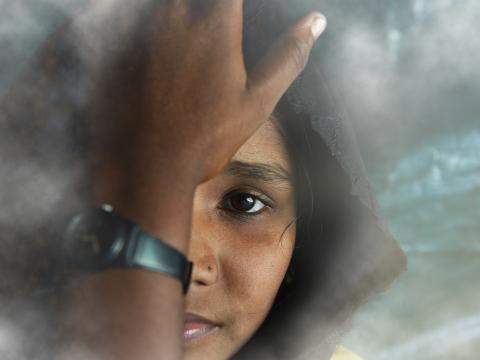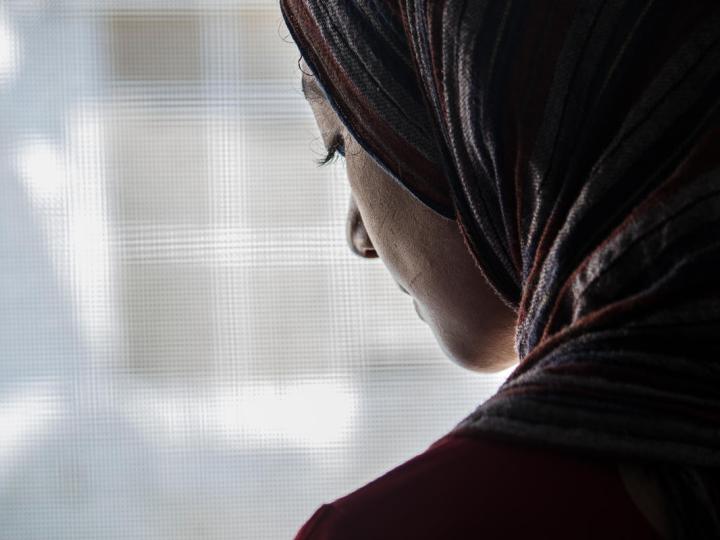
Child Marriage
Facts, FAQs, and what we can do to end it
Children deserve to dream and to experience life in all its fullness
Child marriage ruins children’s dreams and futures, forces children to drop out of school, exposes them to various forms of violence, lessens their chance to have an income, and makes them dependent on their spouses. Children become trapped in poverty and abuse. Teenage girls are more likely to die due to complications in pregnancy and childbirth, and their children are more likely to be stillborn or die in the first month of life. Child marriage ends childhood, drastically violates children’s rights and perpetuates poverty.
We believe the legal age of marriage for girls and boys should be 18 or above. At World Vision, we believe that every child deserves the chance to experience life in all its fullness, to dream big dreams, and to realize their God-given potential. Child marriage is a serious violation of a girls’ rights and deserves a robust global response.
Frequently Asked Questions
What is child marriage?
Child marriage is a legal marriage or informal union where one or both parties are children under the age of 18. While child marriage is far more likely to happen to girls, in some countries, it’s not uncommon for boys to also marry before the age of 18. Often, a younger girl is married to an older man. It impacts girls across countries, cultures, and religions.
How many children are affected by child marriage?
Each year, 12 million girls are married before the age of 18. That's 23 girls a minute that are married before age 18.
There are currently 650 MILLION CHILD BRIDES, girls and women alive today who were married as children. They live in every region of the world.
Globally, 21 percent of young women (ages 20-24) were married as children. That means that worldwide, one in five women aged 20 to 24 were married as children.
UNICEF projects that up to 10 million more girls will be at risk of becoming child brides as a result of the COVID-19 pandemic.
Unless we accelerate our efforts to end child marriage globally, 110 million more girls under age 18 will be married by 2030.
Where does child marriage happen?
Child marriage is a worldwide problem, particularly in developing nations. It cuts across ethnic, cultural, and religious lines and can be found from Africa to the Middle East, Asia to Europe, and the Americas.
The countries with the highest prevalence rates of child marriage include: Niger (76%), Central African Republic (68%), Chad (67%), Bangladesh (59%), Mali (54%), Mozambique (53%), Burkina Faso (52%), South Sudan (52%), Guinea (47%), Somalia (45%), Nigeria (43%), Malawi (42%), Eritrea (41%), Ethiopia (40%), Madagascar (40%), Nepal (40%), Sierra Leone (39%), Democratic Republic of Congo (37%), Mauritania (37%), and Uganda (34%). The prevalence rate represents the percentage of women 20-24 years old who were first married or in union before they were 18 years old.
Source: UNICEF global databases 2020
The countries with the highest number of women 20-24 years old who were first married or in union before they were 18 years: India, Bangladesh, Nigeria, Ethiopia, Brazil, Pakistan, Indonesia, Mexico, DRC, Philippines, Tanzania, Mozambique, Niger, Uganda, Egypt, Sudan, Nepal, Kenya, Thailand, and Afghanistan.
Why does child marriage happen?
Poverty:
Within many impoverished contexts, girls and women aren’t seen as potential wage earners. Rather, they are considered financial burdens to their families and consequently, less valuable than boys. For parents with several children or families living in extreme poverty, child marriage is simply a way to help alleviate the desperate economic conditions they find themselves in. It’s one less mouth to feed and one less education to fund.
Hunger:
Our analysis has found that a child who experienced hunger for one month is 60% more likely to be married than his or her peers who did not experience hunger. Given the increase of almost 12 million children living in crisis levels of hunger from 2019 to 2020, we estimate that 3.3 million children in this generation are now at heightened risk of child marriage, based on the increased hunger they are now experiencing.
Tradition:
Norms and beliefs can also influence child marriage. In some societies, marriage is nothing more than a phase of womanhood. Once menstruation starts, a girl is seen as a grown woman, so the logical next steps for her are marriage and motherhood. Younger girls may also be perceived as more amenable — more easily shaped into an obedient wife. In some places, child marriage is political. Unions are arranged to build or strengthen ties between tribes or communities. Elsewhere, it’s about preserving a family’s honor, avoiding the shame of having an unmarried daughter or one who becomes pregnant out of wedlock. In many cultures, girls who have lost their virginity are considered “ruined” or “unsuitable” for marriage. Parents may arrange a union for their daughter while she is young to ensure she remains a virgin and to maximize her child-bearing years.
Survival:
For other families, forced child marriage is a survival strategy. If they cannot afford to feed and educate all of their children, marrying off the girls eliminates the burden of feeding them, while also allowing parents to give preference to boys’ schooling. In fragile contexts or where there is war or crisis, child marriage is also seen as a way to protect girls in a hostile environment. When people have been forced from their homes, they may reason that it is better for a girl to have the protection of a husband than to risk physical or sexual assault from strangers in refugee camps.
Wellbeing:
World Vision analysis found that a child who classifies himself or herself as thriving is 37.5% less likely to be married than a child who places himself or herself in the struggling category.
School dropout / school attendance:
Children who are not presently in school are 3.4 times more likely to be married than their peers who are currently in school.
How harmful is child marriage?
Girls who marry as children are less likely to reach their full potential. They face separation from family and friends during a critical stage of their lives. They’re expected to take on the role of a grown woman — keeping house and raising a family — rather than going to school and playing. A child bride’s future is often not of her own choosing.
- Education: Girls who aren’t in school face a greater risk of becoming child brides! They are 3.4 TIMES MORE LIKELY TO BE MARRIED than their peers who are currently in school. When girls have access to education, they develop the knowledge and confidence to make important life decisions for themselves — including if, when, and who to marry. Child marriage can also significantly impact a girl’s ability to continue with her education. Many girls are forced to drop out in order to focus on domestic responsibilities or to raise children of her own. Parents and community leaders may not see the value in continuing to educate a girl, seeing it as unnecessary for her primary roles in life as a wife and mother.
- Health: Forced child marriages have devastating consequences on the health and development of girls. As children themselves, they are not physically and emotionally prepared to become mothers. Teen moms and their babies are both at a higher risk of dying in childbirth. In fact, complications in pregnancy and childbirth are the leading cause of death globally among adolescent girls ages 15 to 19. Young girls also don’t yet have a full grasp of their sexual and reproductive health and rights. Many end up married to an older boy or man and find it difficult to voice their needs, particularly around issues like contraception and family planning. They are also more likely to experience domestic violence or exploitation even within the context of a marriage.
- Poverty: Poverty is a key cause of child marriage, but it’s also an ongoing consequence. Robbed of the chance to grow, learn, and fully realize their potential, child brides are disempowered. In developing countries with limited economic opportunities, many girls and women are the most deprived and disadvantaged. Without an education, they are unable to end the cycle of poverty for themselves or their family. Girls in an informal union, rather than a recognized marriage, face an even greater risk of economic exploitation. Without the full advantages of social recognition, citizenship, and inheritance, they are vulnerable to abuse.
Isn't child marriage illegal?
World Vision reviewed 20 countries where child marriage is prevalent. In only two of those – the Democratic Republic of the Congo and Guatemala – was child marriage fully outlawed for boys and girls under the age of 18, without exception. Every other country reviewed (Angola, Armenia, Bangladesh, Bosnia and Herzegovina, Cambodia, El Salvador, Eswatini, Ethiopia, Indonesia, Mexico, Mozambique, Peru, the Philippines, Romania, Sierra Leone, South Africa, Sri Lanka, and Zambia) continues to allow marriage under the age of 18 under specific circumstances. Eleven countries permit children to marry with consent or permission of parents and/or local authorities; at least six countries have specific mention of religious or cultural exceptions (such as the customary Marriage Act in Sierra Leone and South Africa, and religious law in the Philippines). Where these exceptions are allowed, there is often gender discrimination against girls, whose age for legal marriage is lower than boys. At least five countries maintain a lower age of marriage for girls, and at least four countries made exceptions for “special circumstances”, usually interpreted as teenage pregnancy, although age of the male is not referenced. For more information check: Small Cracks, Big Gaps Report.
Countries like Bangladesh, CAR, Indonesia, Niger, Senegal, Sierra Leone, Somalia, South Africa, and Thailand have no minimum age of marriage. Not surprisingly, these countries are among those with the highest prevalence rates of child marriage or among those with the highest number of women 20-24 years old who were first married or in union before they were 18 years. For more information check: Girls Not Brides Atlas.
What can we do to end it?
Wherever World Vision works, we champion the rights of girls and boys. We empower them with educational opportunities. We partner with their families and their entire communities — men, women, boys, and girls — to help everyone understand a girl’s worth and why her rights must be honored. For programs to succeed, everyone needs to work together to help transform harmful beliefs and practices.
As girls grow into women, our work in maternal, newborn, and child health plays a critical role in improving the health of mothers and babies. We educate all community members where we work on the importance of support for women during pregnancy and motherhood and on healthy timing and spacing of pregnancies.
Child brides aren’t the only ones harmed by child marriage. Communities, countries, and entire generations suffer the lasting impacts of child marriage. World Vision’s work in gender equality helps societies achieve more sustainable development, faster economic growth, and better prospects for their children both for boys and girls.
In its work with community child protection committees, faith leaders, children and youth clubs, local governments, and women’s savings groups in many countries, World Vision prompts action to prevent child marriage and intervene on behalf of child brides.
